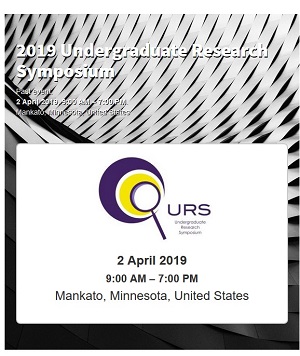Microwave Plasma for Waste Management
Location
CSU Ballroom
Start Date
2-4-2019 10:00 AM
End Date
2-4-2019 11:30 AM
Student's Major
Integrated Engineering
Student's College
Science, Engineering and Technology
Mentor's Name
Jacob Swanson
Mentor's Department
Integrated Engineering
Mentor's College
Science, Engineering and Technology
Description
Plasma gasification of biomass is emerging as an efficient way to reduce the carbon foot print of waste management while generating renewable energy. In general, the gasification process heats solid waste to a sufficient temperature to change states from solid to a gas. This gas is called synthesis gas. A negative byproduct of gasification is tar which shortens component life of gensets which are used to convert the syngas into electricity. A 2.45 GHz microwave driven plasma (MDP) gasification process is examined as a way to improve the conversion efficiency and eliminate tar content of synthesis gas. Simulation of the MDP process opens new doors for the optimization of this green technology. The first step in simulating is validating an experiment already conducted to have a ground state model to improve upon. The adjustable parameters of this system are microwave power, plasma carrier gas flow rate, frequency, and plasma carrier gas. The simulation is performed using the Plasma interface to model wave heated discharges. An experimental design using the geometric constraints defined in a similar model will further validate MDP system design and provide a foundation for more efficient future commercial designs. The expected results from the simulations would be a proportional relationship between microwave power, plasma flame length, and electric field strength. Another important result is that the plasma carrier gas flow rate affects plasma flame size, and area inversely. With these relationships we can work to optimize our system converting biomass to synthesis gas more efficiently.
Microwave Plasma for Waste Management
CSU Ballroom
Plasma gasification of biomass is emerging as an efficient way to reduce the carbon foot print of waste management while generating renewable energy. In general, the gasification process heats solid waste to a sufficient temperature to change states from solid to a gas. This gas is called synthesis gas. A negative byproduct of gasification is tar which shortens component life of gensets which are used to convert the syngas into electricity. A 2.45 GHz microwave driven plasma (MDP) gasification process is examined as a way to improve the conversion efficiency and eliminate tar content of synthesis gas. Simulation of the MDP process opens new doors for the optimization of this green technology. The first step in simulating is validating an experiment already conducted to have a ground state model to improve upon. The adjustable parameters of this system are microwave power, plasma carrier gas flow rate, frequency, and plasma carrier gas. The simulation is performed using the Plasma interface to model wave heated discharges. An experimental design using the geometric constraints defined in a similar model will further validate MDP system design and provide a foundation for more efficient future commercial designs. The expected results from the simulations would be a proportional relationship between microwave power, plasma flame length, and electric field strength. Another important result is that the plasma carrier gas flow rate affects plasma flame size, and area inversely. With these relationships we can work to optimize our system converting biomass to synthesis gas more efficiently.
Recommended Citation
Marquardt, Tressa; Jonathan Menke; Rquof Abeidi; and Danayit Shewamene. "Microwave Plasma for Waste Management." Undergraduate Research Symposium, Mankato, MN, April 2, 2019.
https://cornerstone.lib.mnsu.edu/urs/2019/poster-session-A/32



